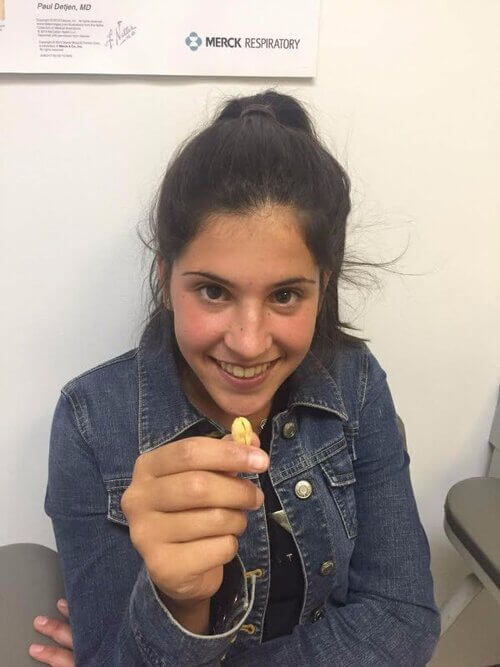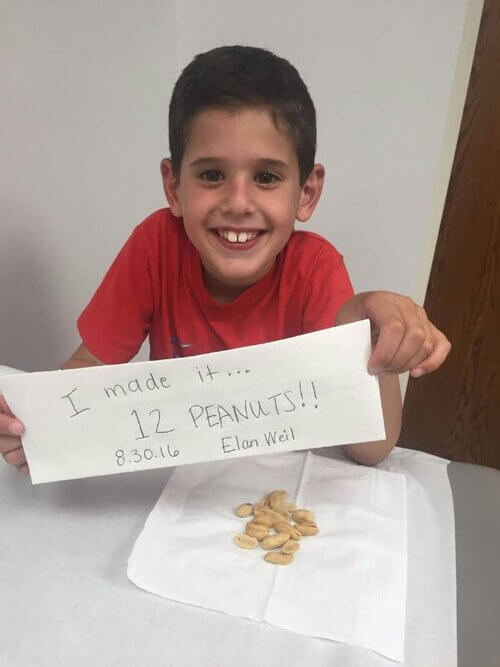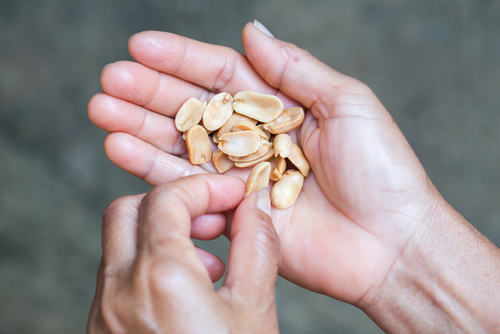Paul Detjen, MD

Dr. Detjen is one of the top recommended allergists on Spokin with users citing him as kind, knowledgeable, reassuring, and always on the cutting edge. Dr. Detjenhas a private practice, Kenilworth Medical Associates, and is one of more than 60 doctors practicing OIT in the US.
“Dr. Detjen is the best. He is caring, kind, and absolutely brilliant.” –Spokin User
Q: What is OIT?
A: Oral Immunotherapy for foods is the process of slowly, incrementally, and orally administering to a food allergic patient, the food to which they are allergic – desensitizing them – and then maintaining that desensitized state for a long enough time to induce the immune system to develop long-term tolerance.
Q: Why did you start OIT?
A: Everyone is aware of the marked increase in food allergy in the past few decades. There are so many families out there for whom food allergy dramatically and negatively alters the family’s lifestyle, not to mention adding significant risk to the patient as they grow up and increasingly head out into the world. I have been looking for a safe and, most importantly, effective way to administer immunotherapy to improve the lives of my food allergic patients and their families. This process is life-changing for them.
Q: When did you start OIT in your office?
A: We researched food immunotherapy options for several years, then during the fall/winter of 2015-16 we attended a number of educational sessions in San Antonio and Los Angeles and then witnessing and learning protocol in Dallas. Our first patients began OIT in February 2016.
Q: For which allergens is OIT available?
A: We have been successful with peanuts, sesame, and milk. We will soon be addingOIT for egg followed by tree nuts and wheat.
Q: What is the cost of OIT? Does insurance cover it?
A: Most offices have initial charges of around $100-400 to cover the acquisition and provision of the liquid capsule products for OIT, depending on what the local compounding pharmacy charges the office per capsule.
Most insurance providers pay for the OIT procedures. These procedures are not new and have been used by allergists for many decades if not longer. The first description of successful food OIT (egg) was more than 100 years ago.
Q: How long do patients have to eat the daily maintenance OIT food until they become fully tolerant?
A: This is one of our most commonly asked questions! Unfortunately, we won’t know the answer until we follow thousands of patients for many years. It is likely, in my opinion, that after three years of maintenance, most patients will need to eat that food approximately once a week for the foreseeable future.
Q: Is it challenging to convince patients to consume the one thing they have so vigilantly avoided?
A: It has been so gratifying to see our patients and their families bravely address these weekly up doses, some of which are more difficult than others. Both the first capsule and the first peanut (or equivalent) have their own challenges. One-third of what we do is desensitize to the food allergen; one-third is changing the mindset of the child; and one-third is changing the mindset of the mom. The last one can be the most gratifying of all.
Q: What results have you seen from OIT?
A: We have been happy to learn that 80 to 90% of our patients sail through this process up to maintenance without difficulty or side effects! We are encouraged by the fact that most of the 10 to 20% with stomach aches or other side effects can be coached successfully through OIT if it is done more gradually over a 10-to-12-month period. The biggest challenge for our office and staff is the labor intensive provision of materials, and then the logistical access of our patients to the office for their weekly up doses.
Q: How does OIT in a private practice differ from clinical trials?
A: In general the clinical trial OIT is a lower dose than what private practice allergists mean when they say OIT.
Q: How many doctors currently offer OIT, and how can our users find them?
A: Approximately 60 to 70 allergists in the United States are now providing private practice (higher dose) OIT to food allergic patients. This website allows you to find the allergist nearest you.
Q: Final Thoughts?
A: The rate of use of EpiPen is greater in food allergic patients who are still trying to avoid the food, compared with our patients who are undergoing private practice OIT.
Where to Find Dr. Detjen:
- Kenilworth Medical Associates, 534 Green Bay Rd., Kenilworth 60043 (847) 256-5505
- Facebook: Kenilworth Allergy Asthma, Dr. Detjen Dr Pockross
Other resources and links to articles:
- Article: Oral Immunotherapy for Peanut Allergy: Multipractice Experiences with Epinephrine-treated Reactions
- Kenilworth Medical Association FAQ
- OIT/SLIT Therapy Hand Out
Stefanie Pessis Weil

Stefanie is on of the Co-founders and Principals of Giving Tree Associates. Stefanie is the mother of three children with food allergies. Two of her three children started OIT in March 2016.
Parent of food allergic Elementary School age son and Middle School age son and daughter
Allergens: Peanut, Tree Nut
Location: Highland Park, IL
Q: Why did you decide to do OIT?
A: Dr. Detjen has been our partner for years – helping us to manage our children’s food, environmental allergies, and asthma. I knew that once he identified a food/allergy protocol to bring to his patients, it would be a thoughtful process. Ultimately, it is my job as a mom to keep my children safe, so OIT was not optional.
Q: Have you experienced any drawbacks?
A: OIT is a commitment of time and discipline. In the beginning, we had to make lifestyle and schedule changes to make it work. The younger the child, the easier it is to control their schedule. The parameters are stringent, and you have to follow them – so planning ahead, calendar reminders, and sticky notes rule my day.
Q: What is the length of therapy and frequency of treatments?
A: Once you complete your first full day office session, each child up doses once a week in Dr. Detjen office (plan for 75 minutes for each appointment). For the remainder of the week, your child will continue the same dose at home twice per day. The entire updose cycle takes about 5-6 months. Ariel went to overnight camp in the midst of her updosing, so she went on a maintenance dose throughout the summer. It will take her longer to complete the full updosing cycle, but it was important to us that she continued life as normal. Make sure you have the right partners in place to make that happen – her overnight camp was incredible.
Q: Would you recommend OIT?
A: Yes, times infinity! Despite the lifestyle changes and commitment of time – once Dr. Detjen starts OIT for tree nuts, we are in! I cannot wait until I never again have to think: What happens if my son forgets or loses his EpiPen and then eats something dangerous? What will happen if my daughter kisses a boy that just ate a snickers? Or what will happen when my son is a high school student and decides he is just too cool to wear his EpiPen pack around his waist? OIT is a miracle!
Q: Final thoughts?
A: Once your child successfully completes the food challenge, he/she goes on maintenance for three years, which entails eating a minimum of eight peanuts a day. Elan cannot wait to eat a Snickers bar for the first time. Ariel thinks that Reese’s Peanut Butter Cups will be her #1!


Jamie Pollack

Jamie stays busy taking care of her three sons and helping out with her husband’s construction business, Red Rock Custom Homes and Remodeling. Jamie started her son on OIT therapy in February 2016
Parent of food allergic High School age son
Allergens: Peanut
Location: Deerfield, Illinois
Q: Why did you decide to do OIT?
A: OIT was a no-brainer for us. Max has had an anaphylactic peanut allergy since he was three years old. Two months before starting OIT he went into anaphylaxis from a plain donut that had been cross-contaminated. We were so nervous about Max starting high school and going off to college. As we all know, accidents can happen no matter how strictly he avoids peanuts. I had been reading about OIT for a long time and was just waiting for an opportunity – I’ve been driving our allergist crazy for years about starting. When our allergist decided to start, we were his first phone call (and ultimately his first of three patients).
Q: Have you experienced any drawbacks?
A: You could say the commitment, but the benefits beyond outweigh any negatives. Many people are reluctant to commit because they don’t think they have time, or their kids dance or play sports, so they are scared about the exercise restrictions. We started right smack in the middle of travel basketball season. Max had weekends where he played in six games over a two-day period, and he never had to miss a single dose. He had P.E. at 8 am every day, and still, it all worked out. I tell people there is never a “good” time to start – just do it!
Q: What is the length of therapy and frequency of treatments?
A: We started in February 2016. The first visit is around eight hours, and honestly the only negative was that it was long and boring – which is what you hope for. Now, we go to the office once a week for one hour after school, and it’s very productive – Max does his up-dose and his homework! With weekly dose increases, he would have completed OIT in about 4 1/2 months, but he went to overnight camp for two months this summer. Max stayed on the same dose from early June until the end of August so he could enjoy camp and switched to once a day doses as it was realistic for the camp schedule. He ate five peanut M&M’s in the nurse’s office each day, and it was just fine. Huge shout out to Camp Kawaga – they were so supportive and amazing with OIT. After years of telling them Max’s throat would close if anything was even cross-contaminated, this was a strange conversation to have the with camp directors and nurses!
Q: Would you recommend OIT?
A: ABSOLUTELY YES! I cannot begin to explain how life-changing OIT has been for Max and our family. In addition to allowing him to enjoy all restaurants, bakeries, and types of food, it has tremendously decreased his anxiety. Bonus: our eleven-year-old is thoroughly enjoying peanut butter in our kitchen on a daily basis!








